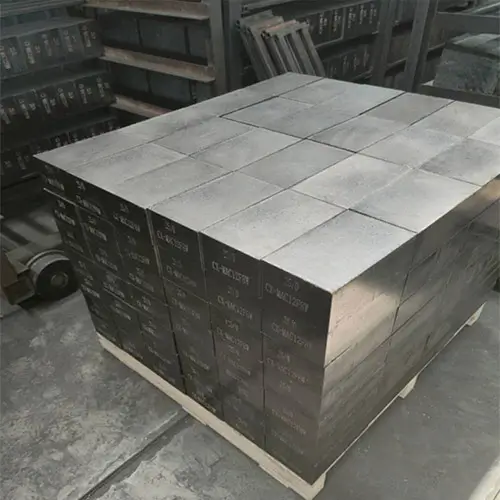In order to guide and standardize the production and operation of magnesia enterprises and promote the balance of market supply and demand, this article mainly analyzes the magnesia market situation in 2024 and predicts the market demand in 2025.
Magnesia varieties and applications
- Magnesia varieties. Mainly refers to light-burned magnesia, dead-burned magnesia, mid-range magnesia, high-purity magnesia, fused magnesia, as well as synthetic sands such as magnesia calcium sand and magnesia aluminum spinel.
- Magnesia application.
Light-burned magnesia is the one with the largest downstream demand. It is the raw material for mid-range magnesia, high-purity magnesia, fused magnesia, magnesium building materials, magnesium chemical products and various metallurgical flux materials. It can also be used as desulfurization powder, soil modifier, feed additive, and water purifier. Its application has been increasing in recent years. Light-burned magnesia used as refractory raw materials is mainly sold in the province, and other light-burned magnesia is mainly sold outside the province. The exported light-burned magnesia is mainly used as soil modifier and feed additive.
Dead-burned magnesia, mid-range magnesia, high-purity magnesia, fused magnesia and other magnesia are used as raw materials for magnesia refractory materials, mainly used for magnesia fired products, magnesia unfired products (magnesia carbon bricks, etc.), and magnesia amorphous refractory materials. These downstream enterprises are mainly distributed in Yingkou and Anshan in our province (accounting for more than 80% of the country), and the rest are distributed in Henan, Zhejiang, Shandong, Hebei, Jiangsu and other provinces and cities. The downstream of these refractory enterprises are mainly steel, non-ferrous metals, cement, glass industries, etc.
Analysis of downstream markets at home and abroad
1.Steel industry. Relevant data show that from January to October 2024, China’s crude steel output was 850.73 million tons, a year-on-year decrease of 3%; pig iron output was 715.11 million tons, a year-on-year decrease of 4%; and steel output was 1164.84 million tons, a year-on-year increase of 0.5%. In October, China’s crude steel output was 81.88 million tons, a year-on-year increase of 2.9%; pig iron output was 70.26 million tons, a year-on-year increase of 1.4%; and steel output was 119.41 million tons, a year-on-year increase of 3.5%. From January to October 2024, the cumulative import of steel was 5.721 million tons, a year-on-year decrease of 645,000 tons, a decrease of 10.1%. From January to October 2024, the cumulative export of steel was 91.893 million tons, a year-on-year increase of 17.361 million tons, an increase of 23.3%.
2.Cement industry. Relevant data show that from January to October 2024, cement production was 1.501 billion tons, a year-on-year decrease of 10.3%, and the lowest level since the same period in 2010. Cement production in October was 175 million tons, a year-on-year decrease of 7.9%. From January to October 2024, cumulative exports reached 4.48 million tons, a year-on-year increase of 47.2%.
3.Glass industry. From January to October 2024, the cumulative glass production was 52 million tons, an increase of 4.5% year-on-year. In October 2024, the glass production was 5.01 million tons, a year-on-year decrease of 5.47%. Data from 2024 showed that the consumption of refractory materials in various industries accounted for 69% of the total amount of steel, 12% of cement, 8% of non-ferrous metals, 5% of glass, and 6% of others. In terms of subdivision, the domestic high-temperature industry requires a total of about 20 million tons of refractory materials. Among them, steel is close to 17 million tons, cement is about 1 million tons, and non-ferrous metals and glass are nearly 2 million tons. More than 6 million tons of magnesia refractory materials are needed, plus about 1 million tons of exports, the overall annual demand for magnesia refractory products (including amorphous) is about 8 million tons. The steel industry directly affects the market capacity of refractory materials. According to the Liaoning Non-Metallic Mineral Industry Association, domestic steel consumption will decrease to a certain extent in 2025, and the overall foreign environment is not good, and there are many unstable factors. It is expected that the demand for steel, cement and other products in the foreign market will not improve, and the market situation will remain severe next year. Continuous technological progress has promoted the reduction of refractory consumption. At the same time, the recycling of waste refractory materials is becoming more and more popular. It is estimated that the demand for magnesium refractory materials in the steel industry will decrease significantly next year, the cement industry will also decrease, and the glass industry will remain the same.
Forecast of Magnesia Market Demand
From the production point of view, in recent years, the annual output of heavy-burned magnesia in our province is about 3 million tons, the annual output of medium-grade and high-purity magnesia is about 1.5 million tons, and the annual output of fused magnesia is about 4 million tons, with an annual output of 8-10 million tons. The annual output of light-burned magnesia is 8-10 million tons (of which about 3 million tons are used for refractory materials), and the total output of various types of magnesia is about 18 million tons.
From the price point of view, affected by the strict control of ore, the price of ore has risen sharply, with a year-on-year increase of 20-30%. The price of magnesia has recovered, up 10% year-on-year, and the price has stabilized in the off-season of ordering at the end of the year, and the price of some magnesia varieties has dropped slightly. Affected by the decline in downstream demand, the price of magnesia refractory products has generally fallen. At the same time, the price of upstream raw materials has risen, and profits have been continuously compressed.
From the application point of view, the annual consumption of fused, heavy-burned, medium-grade and high-purity magnesia as refractory raw materials in Liaoning Province is about 5 million tons, 2-3 million tons outside the province, and about 1.5 million tons are exported. The amount of light-burned magnesia used as the raw material for mid-range and high-purity magnesia is about 2 million tons, and the amount of light-burned magnesia used for other applications is over 5 million tons.
As the situation of high-temperature industries such as steel gradually declines, the demand for magnesia refractory materials is “steady and downward”, and the demand for magnesia used in refractory materials is decreasing year by year. The demand for light-burned magnesia is relatively stable, and the growth in demand from some emerging industries has made up for the decline in demand for refractory materials.
With the release of the effects of the magnesia resource control policy in our province, coupled with the continuous increase in the demand for magnesia such as light-burned magnesia from emerging industries, it is expected that the market demand for magnesia will remain generally stable next year, and the price of magnesia is expected to rise slightly.

